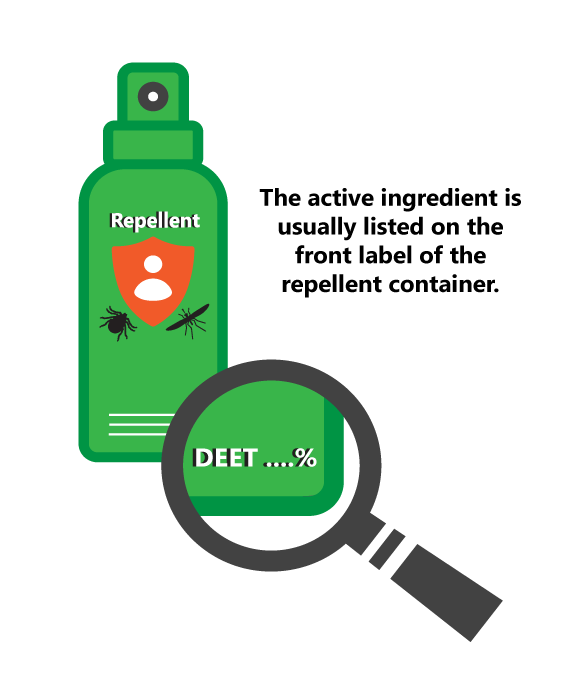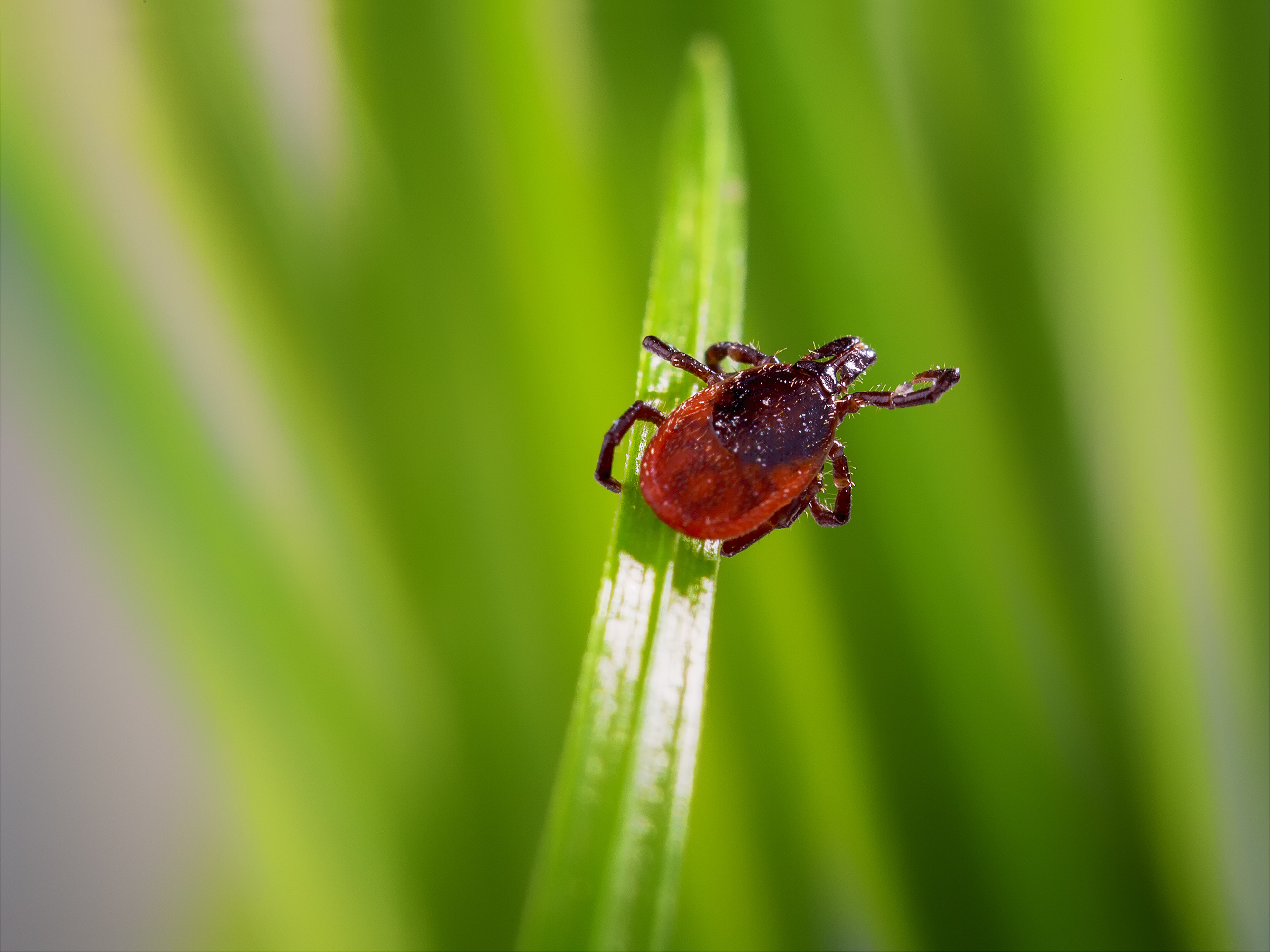Tick Repellent
When ticks bite, they can spread bacteria and other germs that can make people sick. The best way to prevent diseases spread by ticks (including Lyme disease) is to prevent tick bites. EPA-registered insect repellents work to prevent tick bites, and they are safe for use on children.
When choosing a repellent to prevent tick bites, look for the following information on the product label:

Active Ingredient
EPA-registered repellents will contain one of the following active ingredients:
- DEET
- Picaridin
- IR3535
- Oil of lemon eucalyptus (OLE)
- Para-menthane-diol (PMD)
Tick Protection
The label will usually list “ticks” as one of the insects or bugs that the product repels. The label might also list tick-borne diseases that the product can help prevent.
-
Example: “Long Lasting Protection From
Ticks, Mosquitoes and Biting Flies”
-
Example: “Repels
Ticks That May Carry
Lyme Disease”
Protection Time or Active Ingredient Percentage (%)
Not all products will list the number of hours that the repellent will work to prevent tick bites. A repellent with a higher percentage of active ingredient will work longer to keep ticks from biting you. It is best to use repellent with at least 20% of an active ingredient like DEET, picaridin, or IR3535 to protect against tick bites, but DEET products with more than 50% DEET will not usually provide extra protection against tick bites.
Who should use tick repellent and when?
You should use repellent when you spend time outdoors in grassy or brushy areas with ticks, especially when risk of exposure to ticks is high (see seasonal tick risk graphic below).
The different life stages of ticks are active during different times of the year in California. For the western blacklegged tick that can carry Lyme disease, immature nymphs are most active in spring and early summer, and adult ticks are most active from fall through early spring.
There is a risk for tick bites during all times of the year in California, so it is recommended that repellent be used to prevent tick bites when going outside into areas with ticks during any time of the year.

Ticks climb onto people when people brush against them —
ticks do not jump or fly. Ticks are usually found in or on:
- leaf litter
- rocks
- logs
- wooden picnic benches
- on the ends of tall grasses
To prevent tick bites, use EPA-registered insect repellent on clothes and exposed
skin, especially from the waist down, on the legs, ankles, and feet – these
are areas of the body that are more likely to come in contact with ticks
while walking and sitting outdoors.
To protect children and babies from tick bites:
- Dress children in clothing that covers arms and legs
- Use insect repellent according to label instructions